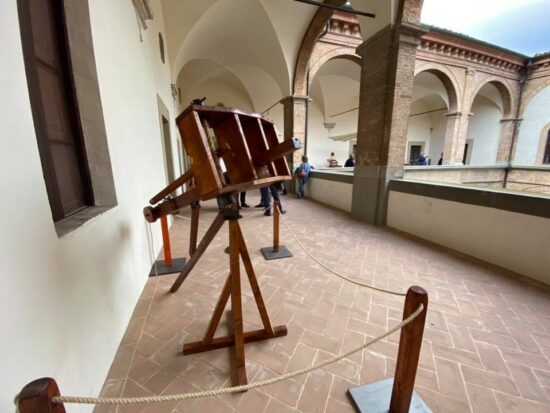Museo Leonardo Da Vinci
A bit further up (north) to Via Cavour 21, one can find an interactive museum dedicated to the most famous Renaissance figure of all time, the Museo Leonardo Da Vinci. The brilliant painter, sculptor, engineer, mathematician, cartographer, (the list is never-ending) for the iconic Renaissance figure known as Leonardo da Vinci.
The genius was born in Vinci in the region of Florence in 1452. He spent his childhood in the small village before he entered Verrocchio‘s workshop, one of the finest in Florence in 1466 as an apprentice. It was in Florence he made his first steps as an artist, where he cultivated his immense appetite for knowledge and molded his talents until 1482 when he left for Milan. It is only natural this city claims a portion of his universal glory.
The Museo Leonardo da Vinci contains more than 50 of Leonardo da Vinci’s models, displayed in four rooms: the largest one is dedicated to civil machines, in the second room flying machines are exhibited, while war machines are to be found in the third and finally in the fourth the recently developed collection of anatomical models can be admired.


Most of the models are real working machines. A documentary on Leonardo Da Vinci’s life and works is displayed on large screen monitors. The gallery has an agreement with Caffé Michelangiolo, the restaurant inside the exhibition area. At the bookshop you will find many publications and gadgets. It must be stated that this is a private collection born by the juvenile passion of Carlo (born on 25th February 1936), the founder of the Niccolai family and company.
Particularly skilled craftsmen, the members of the Niccolai family have so far developed 250 different models, based on the Da Vinci codes and on historical documents using the materials of Leonardo’s time: wood, metal, ropes and fabrics. Professor Carlo Pedretti, Director of the Armand Hammer Centre for Leonardo Studies at the University of California in Los Angeles and of its European division at the University of Urbino, has praised the accuracy in reproducing the models. In the last few years the models have been refined with Professor Pedretti’s support and have rapidly gained international credit.



